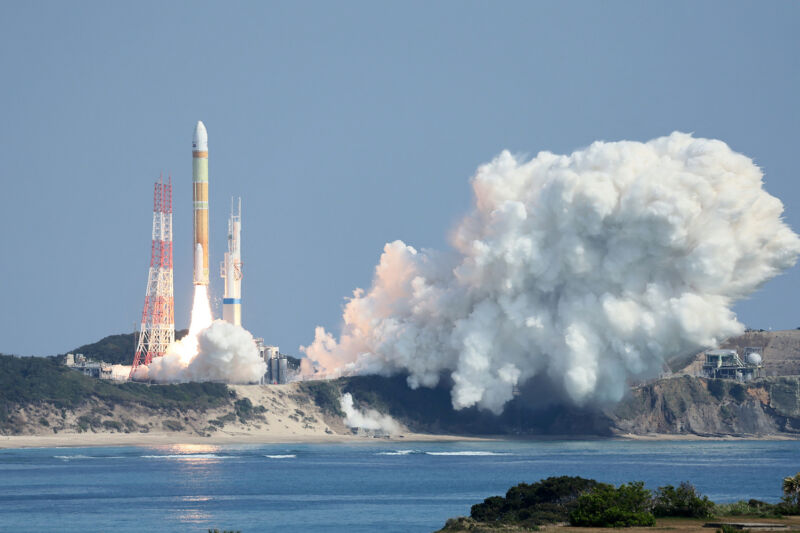
Enlarge / Japan's first H3 rocket lifted off from the Tanegashima Space Center on a failed test flight in March. (credit: Photo by STR/JIJI Press/AFP via Getty Images)
Japan debuted the new flagship H3 rocket in March, capping a decade-long, nearly $1.5 billion development effort to replace a launch vehicle that has been in service for more than 20 years. The H3's upper stage failed to ignite a few minutes after liftoff, causing the rocket and its Earth observation payload to crash into the Pacific Ocean.
Officials in the Japanese government are already plotting the replacement for the H3 rocket, which had a goal of cutting in half the cost per launch of the H-2A launcher, a workhorse for Japan's space program. But the H3 is based on a single-use, expendable design, like nearly all legacy rockets. The H3 design aims to achieve these cost savings through modernized manufacturing techniques and commonality in hardware with Japan's smaller Epsilon rocket family.
The Japanese government updated its basic plan on space policy in June with language endorsing the development of a reusable rocket to follow the H3. Now, the Japan Aerospace Exploration Agency (JAXA) has tapped Mitsubishi Heavy Industries for joint studies on the next-generation launcher, which would have a recoverable and reusable first-stage booster, Space News reported this week.
No comments:
Post a Comment